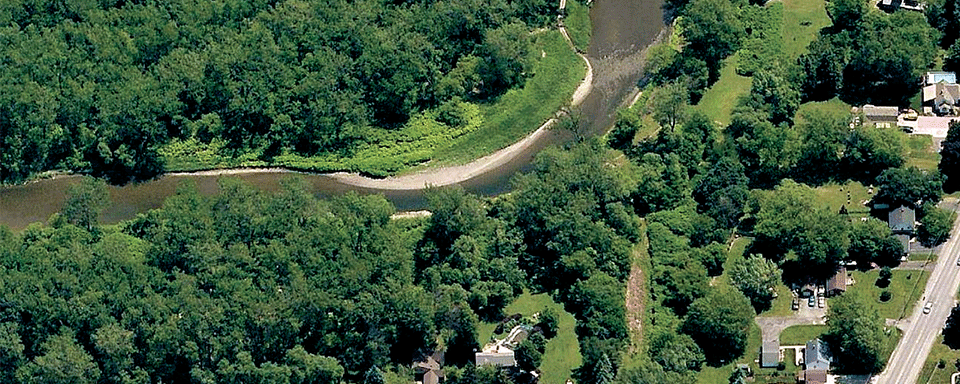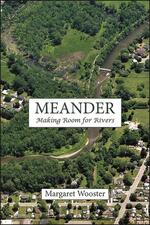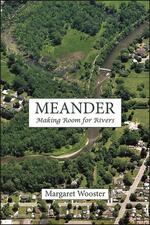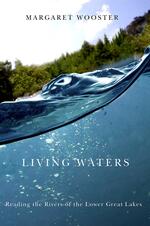
Why Meander?
Guest Post by Margaret Wooster (SUNY Press Author)
We have an interesting experiment going on in the Great Lakes region—an ambitious multinational program to restore and maintain a complicated natural system of flowing water. The modern understanding of large, shared, freshwater ecosystems began here, as did the potential for a unique Canadian-US-First Nations approach to management. We have invested half a century in this experiment, and I am grateful to have had a small part in it almost from the beginning.
That experiment has produced stories worth sharing, stories grounded in the science of how rivers work in the largest freshwater ecosystem on Earth and in my home geography of New York State’s west coast. I want to show you a hill made of water, an island of life known as the oxbow, a reviving piece of post-industrial lakeshore, and something I found in my backyard last summer. I hope to inspire new or greater appreciation for the natural flow of water everywhere by revealing how it works in this corner of the Great Lakes, where so many flows converge and funnel into the steady pour of Niagara.
To protect water in its natural habitat we must first deconstruct the scientific and legal vocabulary for lake and river health, including the words of the Clean Water Act and the Great Lakes Water Quality Agreement. Both say their purpose is “to restore and maintain the chemical, physical and biological integrity of the waters—of the United States” or “of the Great Lakes ecosystem,” respectively. But what waters do these statements specifically address? And more particularly, what do they omit?
The cut-off oxbow tells its own story about how physical integrity continues to be compromised by the ongoing straightening, deepening, and engineering of natural flows. By way of contrast, we explore the how and why of natural stream meandering and follow a creek to its source—a “hill made of water” – the birthplace of Buffalo Creek and its sister tributaries to Lake Erie and key to understanding how the glacial history of the Great Lakes Basin, in effect, drives everything.
The settlement history of the Great Lakes region and particularly Western New York is another powerful driver in this story, a mindset influencing how we relate to the land and water. Distant speculators like the Holland Land Company, whose concept of a place they never saw was “vacant land,” were able to expedite the rearrangement of entire landscapes including rivers, forests, wildlife and people who had co-evolved for millennia. For developers today “vacant land” remains a useful concept: it means clean slate; “build to suit,” carte blanche. In contrast we have a message from the Haudenosaunee people still living on remnants of their original lands in New York State and southern Canada: an instruction calling for a “value change for survival.”
This change in value involves knowing enough about a place to care about who else lives there, from the Indigenous people, to the fish in the harbor, to the life below the flow. Are caddisfly, mayfly, and stonefly nymphs present in the stream-bottom mixing zone where cold upwelling ground water and nutrient-rich surface water meet and support the freshwater food web? Are the vertical and horizontal connections—between surface and groundwater, stream and floodplain, river delta tributaries and lake—intact? The presence and richness of benthic life is an indicator of stream health which makes every creek and lakeshore exploration an adventure and a potential contribution to the work of assessing and restoring the physical, chemical and biological integrity of the waterbody.
Buffalo Creek is the silk thread meandering through this labyrinthine narrative all the way from the hill made of water, to the Buffalo River-Lake Erie delta. Buffalo’s Erie coast, like so many Great Lakes post-industrial waterfronts, is a place in profound transition. Which way will it go? This is a front we fight on today.
Margaret Wooster has worked as a watershed planner for local governments and environmental groups in Western New York, was a founding member of Buffalo Niagara Waterkeeper, and has taught Environmental Planning at the University at Buffalo, State University of New York. She is the author of Meander: Making Room for Rivers and Living Waters: Reading the Rivers of the Lower Great Lakes, both published by SUNY Press. She lives in Buffalo, New York.




